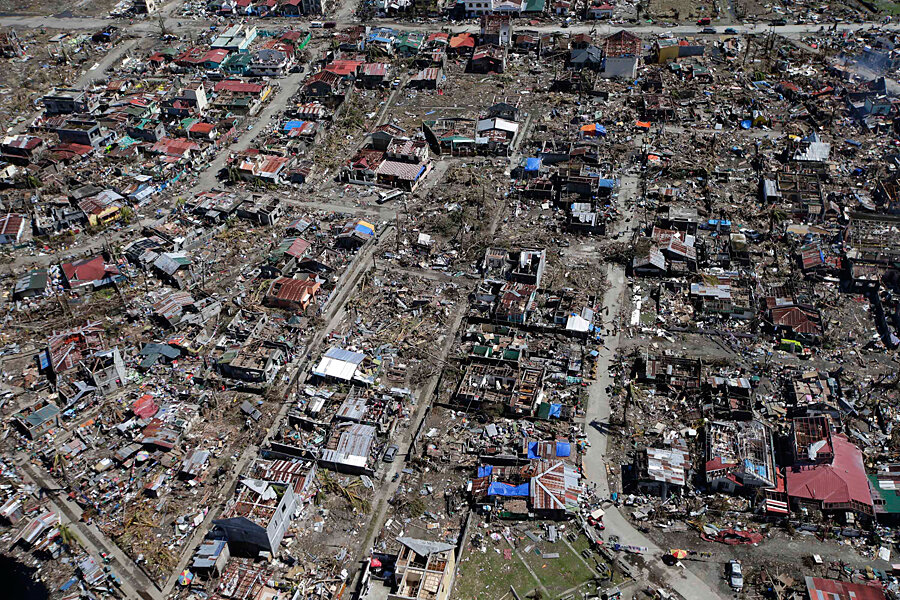By the numbers: Typhoon Haiyan's human toll, property damage, and aid pledges.
Loading...
Seven days after Typhoon Haiyan wreaked havoc on the central Philippines,the aid response gained steam as the true costs of the disaster became apparent. Below is a summary of Typhoon Haiyan by the numbers, with figures that are current as of 5PM EST on Friday Nov. 15.
Damage from Typhoon Haiyan
The following information is based on updates provided by the Philippines government agency tasked with response and recovery, the National Disaster Risk Reduction and Management Council (NDRRMC), with additional figures from the United Nations.
9.1 million: Number of people affected by the storm across the country, according to NDRRMC. The United Nations estimates this number to be somewhat higher, at 11.8 million.
2.5 million: Number of people in need of food assistance (UN estimate).
1.9 million: Number of people displaced, including those being served in one of the country’s 1,141 evacuation centers.
3,631: Number of people reported dead.
12,487: Number of people injured.
1,179: Number of people missing.
273,375: Number of houses damaged by the storm, including 153,098 that were completely destroyed.
$216.6 million: Economic cost of damage to infrastructure and agriculture.
Assistance from international donors
Australia: $28 million (A$30 million) pledged by the government, plus medical personnel, medical and hygiene supplies.
United States: $20 million in immediate relief funds, ships and aircraft for aid distribution, and 300 military personnel (a number that may triple in the coming week, according to US officials.)
UK: $16 million (£10 million) in official relief funds, plus $8 million (£5 million) to match public donations contributed to the country’s charity alliance; supplies, equipment, ships and aircraft.
Japan: $10 million, in addition to 1,000 troops, supply ships and airplanes, and a 25-person medical team.
United Arab Emirates: $10 million
South Korea: $5 million, relief goods, and a team of doctors and emergency rescue workers.
China: $1.6 million, a higher pledge made after its initial offer of $100,000 spurred a wave of criticism.
European Commission: $17 million pledged for rehabilitation and reconstruction.
Israel: A 148-member team of doctors and search-and-rescue specialists, plus a field hospital to be equipped with 100 tons of donated supplies.
Canada: A team of approximately 200 people and a transport plane to help deliver supplies.
Indonesia: $2 million ($1 million in cash and the rest in food, water and medical supplies and logistical assistance.
Asian Development Bank: $500 million in emergency loans and $23 million in grants.
United Nations: The UN launched an appeal for $301 million for the Haiyan Action Plan, of which 19 percent (or $58 million) was funded as of Friday November 15. Much of this funding comes from the official pledges made by the governments above. An emergency allocation of $25 million from the UN Central Emergency Response Fund was released on November 11 to fund emergency mobilization.





